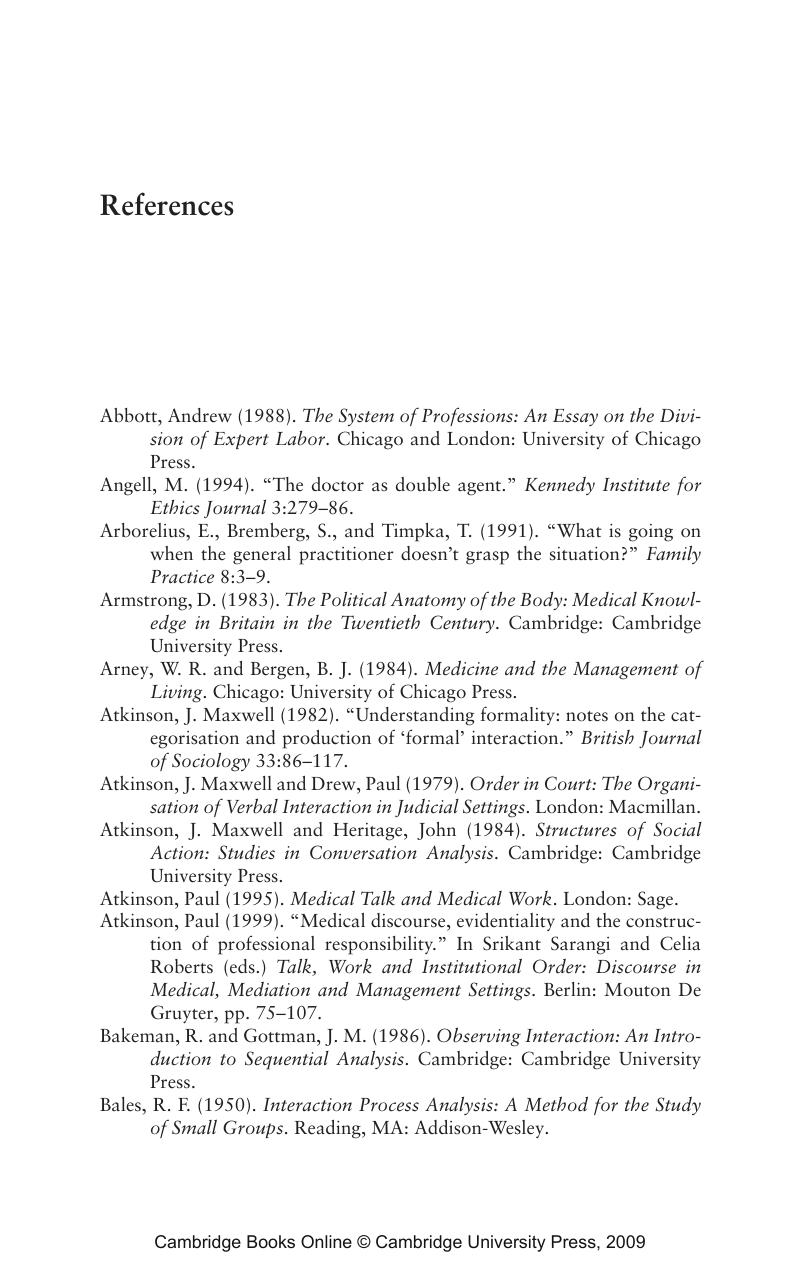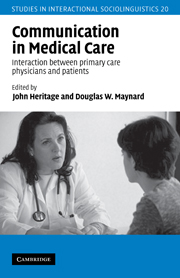Book contents
- Frontmatter
- Contents
- List of figures
- List of tables
- List of contributors
- Foreword
- List of transcript symbols
- 1 Introduction: Analyzing interaction between doctors and patients in primary care encounters
- 2 Soliciting patients' presenting concerns
- 3 Accounting for the visit: giving reasons for seeking medical care
- 4 Realizing the illness: patients' narratives of symptom discovery
- 5 Explaining illness: patients' proposals and physicians' responses
- 6 Taking the history: questioning during comprehensive history-taking
- 7 Body work: the collaborative production of the clinical object
- 8 Communicating and responding to diagnosis
- 9 On diagnostic rationality: bad news, good news, and the symptom residue
- 10 Treatment decisions: negotiations between doctors and patients in acute care encounters
- 11 Prescriptions and prescribing: coordinating talk- and text-based activities
- 12 Lifestyle discussions in medical interviews
- 13 Coordinating closings in primary care visits: producing continuity of care
- 14 Misalignments in “after-hours” calls to a British GP's practice: a study in telephone medicine
- References
- Subject index
- Name index
- References
References
Published online by Cambridge University Press: 07 December 2009
- Frontmatter
- Contents
- List of figures
- List of tables
- List of contributors
- Foreword
- List of transcript symbols
- 1 Introduction: Analyzing interaction between doctors and patients in primary care encounters
- 2 Soliciting patients' presenting concerns
- 3 Accounting for the visit: giving reasons for seeking medical care
- 4 Realizing the illness: patients' narratives of symptom discovery
- 5 Explaining illness: patients' proposals and physicians' responses
- 6 Taking the history: questioning during comprehensive history-taking
- 7 Body work: the collaborative production of the clinical object
- 8 Communicating and responding to diagnosis
- 9 On diagnostic rationality: bad news, good news, and the symptom residue
- 10 Treatment decisions: negotiations between doctors and patients in acute care encounters
- 11 Prescriptions and prescribing: coordinating talk- and text-based activities
- 12 Lifestyle discussions in medical interviews
- 13 Coordinating closings in primary care visits: producing continuity of care
- 14 Misalignments in “after-hours” calls to a British GP's practice: a study in telephone medicine
- References
- Subject index
- Name index
- References
Summary

- Type
- Chapter
- Information
- Communication in Medical CareInteraction between Primary Care Physicians and Patients, pp. 445 - 480Publisher: Cambridge University PressPrint publication year: 2006



